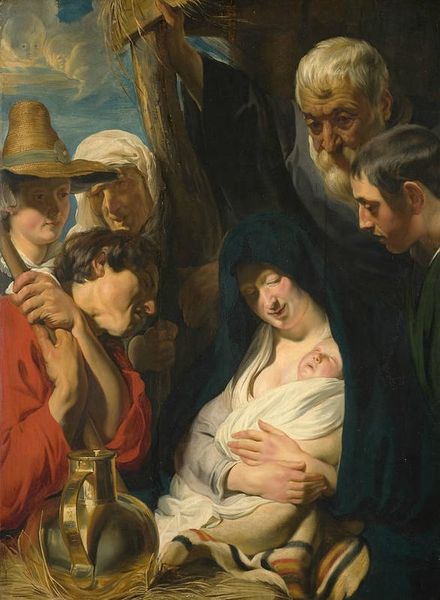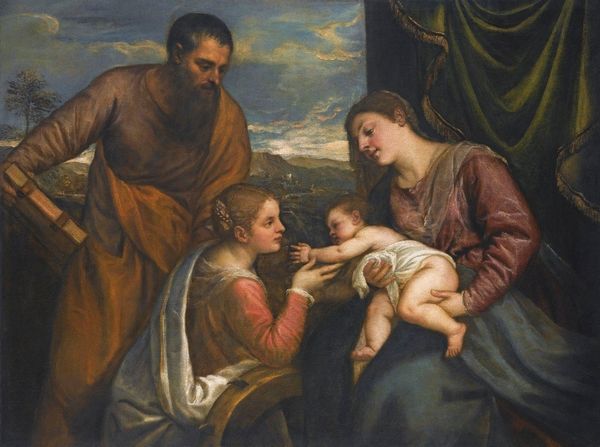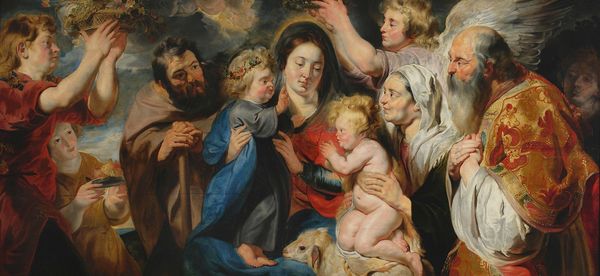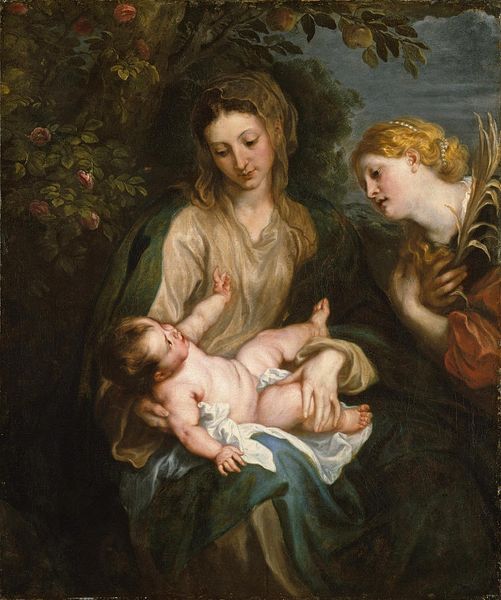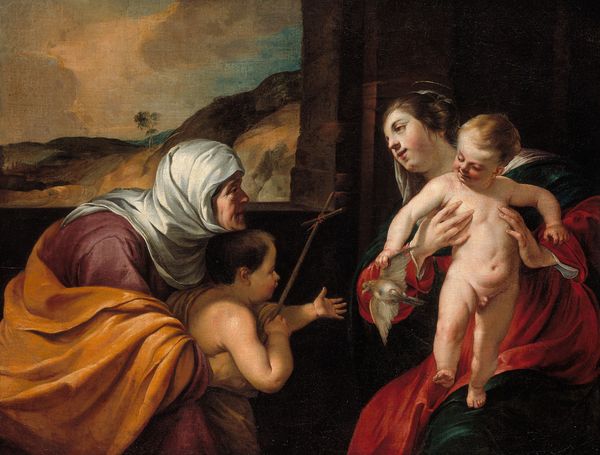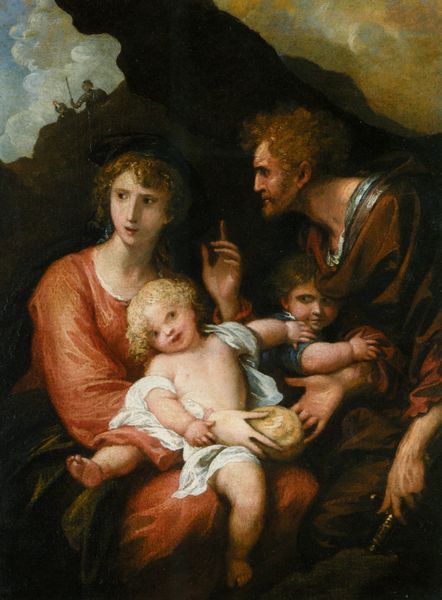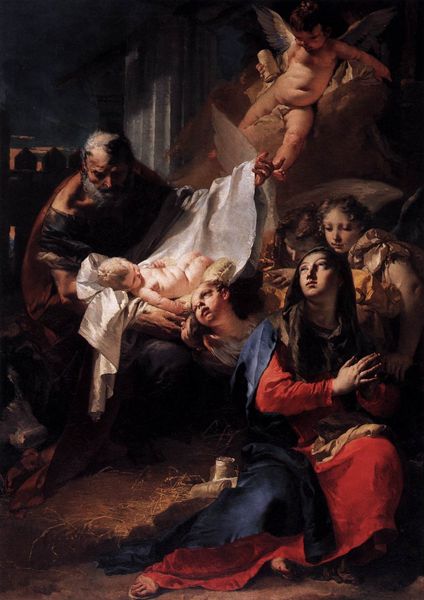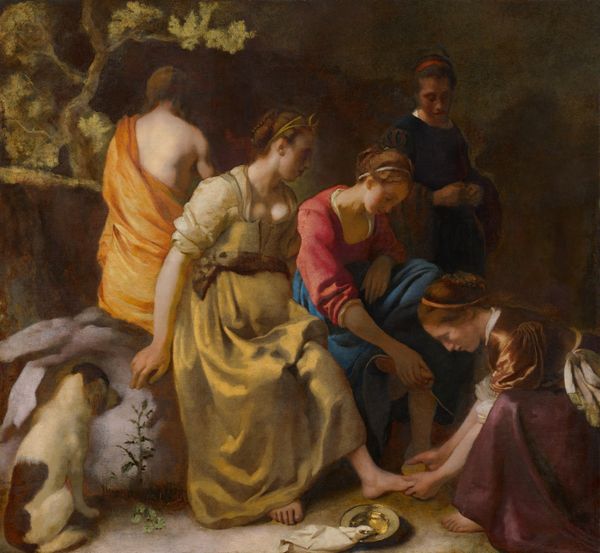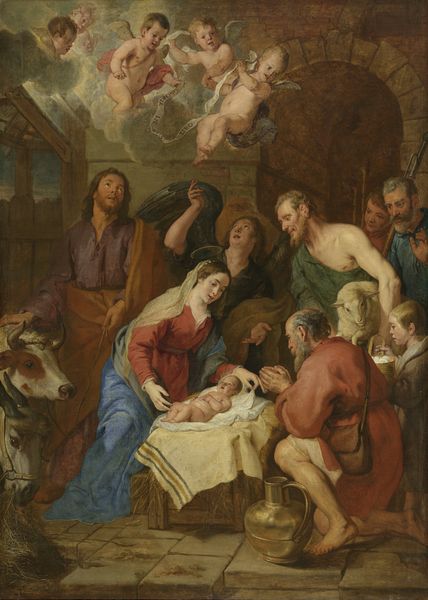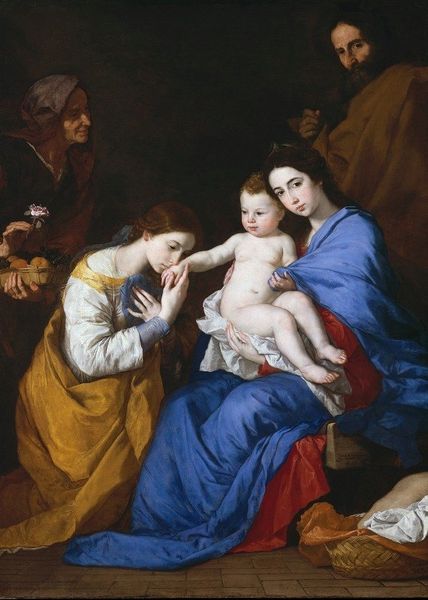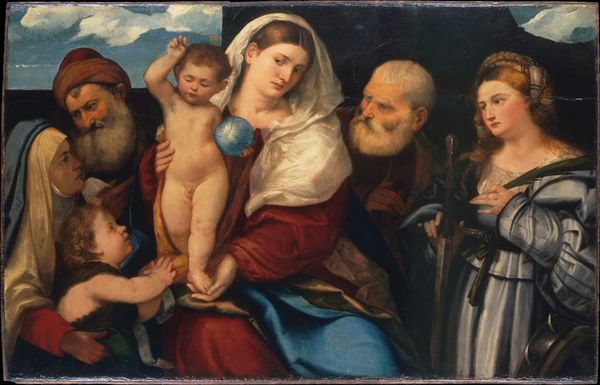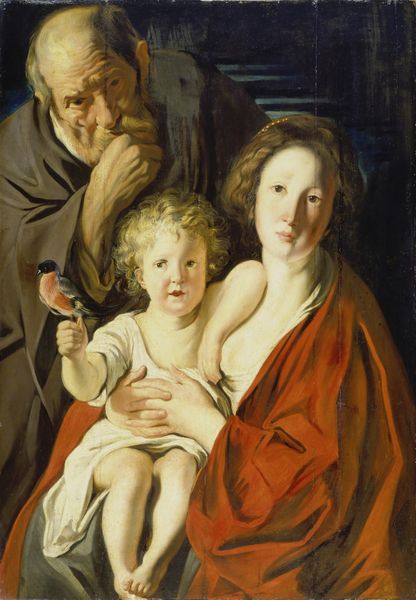
#
possibly oil pastel
#
oil painting
#
portrait reference
#
portrait head and shoulder
#
underpainting
#
animal drawing portrait
#
portrait drawing
#
facial portrait
#
portrait art
#
digital portrait
Copyright: Public Domain: Artvee
Curator: Welcome to this presentation of "The Adoration of the Shepherds," an oil painting from around 1617 by Jacob Jordaens. Editor: The eye is immediately drawn to the Madonna figure. Jordaens captures a feeling of profound stillness around the new mother despite the bustle surrounding her. It's intimate and quite powerful, would you agree? Curator: Absolutely, her position in the middle ground provides an ideal sense of focus and resolution. Observe how the converging gazes of the figures orchestrate the organization of shapes and lines throughout the piece, all centered on the Virgin and Child. The texture of the bundled hay in the foreground mirrors the folds and gathers of drapery around the central figures. Editor: Indeed. The faces peering in hold a range of symbols themselves. The old woman with her worn face represents generations past and the accumulated wisdom of those ages recognizing something holy. The wide-eyed, almost startled expression of the boy in the red shirt echoes the revelation of a new age for all humankind. That brass jug placed in the left foreground could very well symbolize purity, as water is often depicted in connection to the Virgin Mary, a visual symbol of cleansing and spiritual renewal. Curator: Note Jordaens' remarkable handling of light. See how the subtle gradations delineate volume. The chiaro-scuro creates an immersive stage, heightening drama by obscuring portions of the periphery. Editor: Absolutely, and I love the naturalism Jordaens brings. There is nothing idealized about the shepherds—they are regular folk witnessing something truly extraordinary. Curator: A Baroque sentiment, certainly! This work encapsulates a moment of profound mystery as an emblem of humble humanity confronts the divine. Editor: I find this work's enduring power to be its representation of the sacred being so close to the mortal world. I feel drawn into that space, wondering about my role as a visitor. Curator: Its synthesis of classical and Baroque forms invites this participation. The art speaks beyond its historical moment through formal organization alone.
Comments
No comments
Be the first to comment and join the conversation on the ultimate creative platform.
